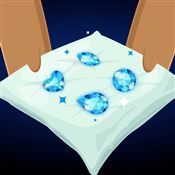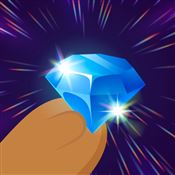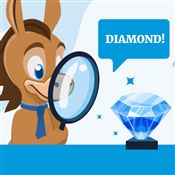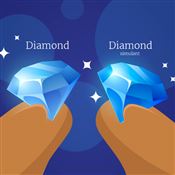Diamond Statistics: What You Need to Know
A diamond goes through a long journey from the mine to her finger. Read on for some brilliant statistics and facts.
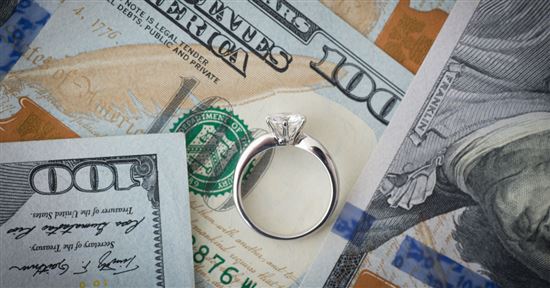 |
Most people think of diamonds as a symbol of love. Behind that symbol, though, lie billions of dollars, many hands, and even bloodshed. This article reveals the real story of the diamonds.
Diamond Industry Statistics
In 2015, 127 million carats were produced. Australia and Russia saw the largest increases. Many people think of Africa as the only diamond producer. While still a top producer, other countries have topped the charts. One thing remained constant, though. De Beers is still in control. Recently, they cut diamond production in Botswana. Despite it being one of the leading diamond producers, the diamond market's needs changed.
- Where do diamonds originate?
Diamonds originate from around 25 countries. The majority, however, comes from Africa - and has since the early 1870s. Today, diamonds originate not just from South Africa. Russia and Botswana have quickly taken a top spot. They are also found in Canada, the Democratic Republic of Congo, and Namibia. - How many diamonds come from different areas?
Of the above countries, the following produce at least one million carats per year:- Russia: 23.5 million carats
- Botswana: 15 million carats
- Canada: 13 million carats
- Angola: 8.1 million carats
- Democratic Republic of Congo: 2.8 million carats
- Namibia: 2 million carats
They provide a majority of the world's diamonds. However, a few other countries produce a lesser quantity, including:
- Australia
- Ghana
- Guinea
- Guyana
- Sierra Leone
- Zimbabwe
- Russia: 23.5 million carats
- Where are the majority of diamonds sold?
The United States makes up 50% of the diamond sales throughout the world. We aren't the only country purchasing them, though. Japan is the second highest consumer of diamonds. They purchase 15% of the world's diamonds. From there, Italy makes up 5% and India 3%. China and the Gulf both make up 2%. The remaining 23% is spread throughout other countries.
Diamond Industry Worth
The diamond industry is a billion dollar business. That's probably not a surprise. Compared to the gold industry, it's small, though.
When you think of a diamond, you probably think of the jeweler. Your diamond had a history long before the jeweler got it, though. It all began with the miner. Once mined, diamonds go to cutters and polishers. This still isn't the finished product, though. Next are the jewelry manufacturers, and finally the retailer.
Throughout the process, your diamond incurs many costs. This may explain the final shocking cost you might see at the jeweler.
- What's the cost of diamonds at the first stage of mining?
In 1999, diamonds purchased just after mining cost around $7.3 billion. - How much did jewelers pay for those same diamonds after sorting and polishing occurred?
Jewelers purchased the diamonds for almost double, at $14 billion. - How much cost was added after jewelers added stones and metal to create diamond jewelry?
Jewelers again doubled the cost of the diamonds by adding almost $14 billion to the production costs. This brought the cost of diamond production to $28 billion. - What's the markup for diamonds?
Diamonds have a 100% retail margin. This means consumers paid $56 million for those diamonds.
Blood Diamond Statistics
Diamonds often have a rough history (pun intended). Many diamonds fund civil wars in African countries. Others are a result of child labor and poverty-type conditions. Unfair labor practices leave miners in complete poverty while the cartels strike it rich. The Kimberley Process helped decrease the amount of blood diamonds sold in the world. But it isn't foolproof. Illegal tactics and lack of sufficient resources allow these diamonds to slip through the cracks.
- What percent of diamonds are blood diamonds?
It is believed that 4% of the world's diamonds come from conflict areas. The main issue comes from what they call alluvial diamonds. These diamonds come from unmonitored areas. This is in contrast to areas like Botswana, Namibia, Russia, Australia, and Canada. These areas are tightly controlled and the conditions are safe for the miners. But 25% of the world's diamonds come from areas along the riverbed. These are the alluvial diamonds. These areas are harder to monitor and control. It's thought that this is where conflict diamonds originate. - What's so bad about alluvial diamond mining?
For starters, most miners live in poverty. The miners are usually poorly educated and poorly paid. The mining is usually conducted illegally. These miners work under unfair conditions that could affect their health. Their living conditions are anything but healthy. - Are blood diamonds still an issue?
Many believed the Kimberley Process put an end to blood diamonds, but issues still exist today. According to the Enough Project, two armed groups still exist in the Central Africa Republic. These groups make anywhere from $3 million to $6 million per year from blood diamonds. - How many people die from blood diamonds?
It's estimated that anywhere from 3 to 4 million people have lost their lives due to blood diamonds. - Where are blood diamonds found?
A majority of blood diamonds are found in Angola, Sierra Leone, and Congo. These 3 countries are filled with natural resources, yet remain the poorest countries.
The Bottom Line
Research your diamond. Go behind the 4 Cs. Know the diamond's history. Ask your jeweler about the diamond's origin. Ask for written proof. This gives you an idea of what your money supports. If you want to avoid blood diamonds, ask for the System of Warranties. This tracks the diamond as it changes hands. If nothing else, knowing a diamond's history can add to its romance. Maybe you want a diamond from a particular country. Or maybe you just want to know that your diamond was part of a fair trade. Either way, the information is there - you just have to ask for it.
Sources and References:
Write to Kim P at feedback@creditdonkey.com. Follow us on Twitter and Facebook for our latest posts.
Read Next:
